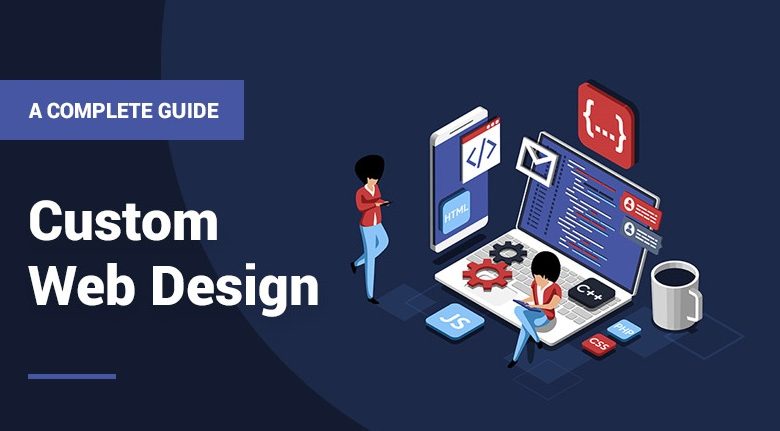A Comprehensive Guide To Custom Website Design

In today’s digital age, having a website is essential for any business looking to make an impact online. A website serves as the face of your brand and the first point of contact for potential customers. However, not all websites are created equal, and a custom-designed website can make a big difference in your business’s success. In this article, we’ll explore everything you need to know about custom website design, from the benefits to the process and everything in between.
Benefits Of Custom Website Design
A custom-designed website offers a range of benefits for your business’s online presence. Here are just a few:
- Unique Brand Identity – A custom design allows you to create a website that reflects your unique brand identity, helping you stand out from competitors.
- Improved User Experience – A custom design can be tailored to your target audience, offering an improved user experience that can lead to higher conversions and more business opportunities.
- Better SEO – A custom design can include optimized code that’s built with SEO in mind, improving your website’s visibility in search engine results.
- Scalability And Flexibility – A custom design allows your website to be easily scaled and flexible, with the ability to add new features and functionalities over time.
- Better Security – A custom design can include built-in security measures to protect your website from cyber-attacks, reducing the risk of security vulnerabilities.
The Custom Website Design Process
The custom website design process involves several steps, each of which is essential for creating a website that meets your unique needs. Here’s a breakdown of the process:
- Discovery And Research – The first step in the custom website design process are to understand your business’s goals and target audience. This involves research into your industry and competitors and identifying key features and functionalities that are essential for your website.
- Planning And Strategy – Once the research is complete, the next step is to develop a plan and strategy for your website. This includes creating a site map, wireframes, and a content plan.
- Design And Development – The design and development stage involves creating the look and feel of your website, including the layout, typography, and imagery. This stage also includes developing the code that powers your website and integrating any necessary functionality.
- Testing And Quality Assurance – Once your website is complete, it’s important to test it thoroughly to ensure that it’s working correctly and delivering the intended user experience.
- Launch And Ongoing Support – After your website has been tested and quality-assured, it’s time to launch. Ongoing support is also essential to ensure that your website is always up-to-date and performing at its best.
Choosing A Custom Website Design Firm
Choosing the right custom website design firm is essential for creating a website that meets your unique needs. Here are some factors to consider when choosing a custom website design firm:
- Experience – Look for a firm with expertise in your industry and a track record of delivering high-quality custom website design.
- Portfolio – Review the firm’s portfolio to see examples of their work and ensure that their design aesthetic aligns with your brand identity.
- Process – A reputable custom website design firm should have a clear process, with well-defined milestones and timelines.
- Communication – Clear communication is essential for a successful custom website design project. Look for a firm that’s responsive and easy to communicate with.
- Support – Ongoing support is essential for ensuring that your website is always up-to-date and performing at its best. Look for a firm that offers ongoing support and maintenance services.





